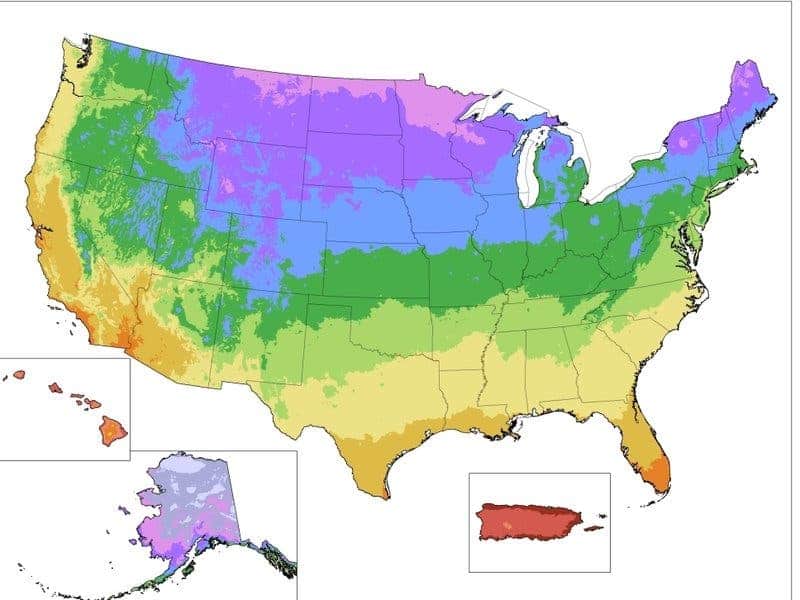
As climate heating starts to take its toll more and more, it’s becoming increasingly clear that planting patterns are also affected by these changes — and many plants are struggling to adapt. They do this in several ways, but one of the more direct ways is by changing their range. Simply put, as the climate becomes hotter and hotter, plants “move” to the north in the US (conversely, south of the equator, they migrate southward).
The most important factor for plants is the coldest winter temperature — this is crucial for the plants’ survival. According to a USDA study, the average coldest temperatures of 1989-2018 are more than 3°F warmer for the average city compared to the 1951-1980 baseline. Temperatures have significantly increased at almost all of the 244 stations analyzed. A warming climate shifts the natural ranges of plants all around the country and farmers and gardeners need to consider the ‘new normal’, the USDA urges.
These findings are echoed by the Third National Climate Assessment, which summarizes the impacts of climate change on the United States.
“Landscapes and seascapes are changing rapidly, and species, including many iconic species, may disappear from regions where they have been prevalent or become extinct, altering some regions so much that their mix of plant and animal life will become almost unrecognizable,” the assessment reads.
“Timing of critical biological events, such as spring bud burst, emergence from overwintering, and the start of migrations, has shifted, leading to important impacts on species and habitats.”
This is important to consider not only for gardeners but also for urban and rural planners. North Carolina Arboretum Director George Briggs says that people need to be climate-literate and make better decisions in the face of a shifting climate.
The National Oceanic and Atmospheric Administration (NOAA) also creates interactive plant hardiness maps which paint a similar picture.
“There is telling evidence that climate change is affecting plant life around the world and here at Longwood,” says Paul Redman, Director of Longwood Gardens in Pennsylvania. “Sharing the important work of NOAA with our staff, guests, and community is integral to our mission and continues Longwood Gardens’ commitment to environmental stewardship.”
In the grand scheme of things, it is yet another reminder that climate heating affects us in many (and often indirect) ways. It is a problem unfolding now, and that we need to address as soon as possible.
You can find out your area’s plant hardiness zone or check out the distribution of planting zones in your states, check out the USDA service here.









